Porgy and Bess Program [pdf] - American Repertory Theater
Porgy and Bess Program [pdf] - American Repertory Theater
Porgy and Bess Program [pdf] - American Repertory Theater
Create successful ePaper yourself
Turn your PDF publications into a flip-book with our unique Google optimized e-Paper software.
egretted doing it. But Parks has talked about the<br />
script’s flirtations with minstrelsy <strong>and</strong> “noble savage”<br />
cliches as a “shortcoming of underst<strong>and</strong>ing.”<br />
While the creative team has altered material in<br />
the book, always with a careful h<strong>and</strong>, Paulus says<br />
the stereotyping usually stems from the lack of<br />
dramaturgical purpose.<br />
“‘I Got Plenty of Nuthin’’ can have a bad<br />
rap, because here it is, this African-<strong>American</strong><br />
man singing how he’s happy with nothing. What<br />
Suzan-Lori was interested in, even more than<br />
[the derogatory stereotyping], is the context of<br />
the song in the show. So she has written a few<br />
lines that give it a purpose that relates to the specific<br />
action of the story at that moment. We’re<br />
looking at anything in the script that sticks out as<br />
dramaturgically questionable, because usually the<br />
problem is that the characters are incomplete.<br />
Therefore, you can look at them as cliches.”<br />
Paulus may be striving to make <strong>Porgy</strong> <strong>and</strong> <strong>Bess</strong><br />
resonate today, but she certainly has a reverence<br />
for the work’s rich history. After all, she taught a<br />
course on <strong>Porgy</strong> at Harvard last spring with<br />
renowned cultural historian Marjorie Garber.<br />
Indeed, Paulus’ grasp of <strong>Porgy</strong>’s roots are impressive.<br />
She mentions how George Gershwin <strong>and</strong><br />
his associates famously walked Boston Common<br />
the night after the show’s premiere <strong>and</strong> decided<br />
to make major cuts to the show. She talks<br />
passionately about <strong>Porgy</strong>’s complex social <strong>and</strong><br />
racial history <strong>and</strong> its evolution over the decades<br />
in various mediums. She points out that <strong>Porgy</strong><br />
had its real breakthrough <strong>and</strong> solidified its status<br />
in the canon when it was revived on Broadway<br />
in 1942 as a musical under the auspices of<br />
Cheryl Crawford, ran for nine months, then<br />
toured the country.<br />
In the 1950s, it became a main diplomatic<br />
export of the U.S. State Department, she says,<br />
<strong>and</strong> the cast (including a young Maya Angelou)<br />
were some of the first <strong>American</strong> artists to perform<br />
behind the Iron Curtain. When the 1960s<br />
hit, with the rise of the Civil Rights <strong>and</strong> black<br />
power movements, few wanted to touch <strong>Porgy</strong><br />
<strong>and</strong> <strong>Bess</strong> because of its stereotypes <strong>and</strong> perceived<br />
racism. But at that time, the music exploded into<br />
the popular consciousness, as jazz <strong>and</strong> blues<br />
artists, from Ella Fitzgerald <strong>and</strong> Billie Holiday to<br />
Stop Guessing<br />
tutoring test preparation admissions<br />
call to inquire about courses <strong>and</strong> small group lessons<br />
617 395 4160 or visit us at veritutors.com<br />
$50 off your first lesson if you sign up before september 1 st . just mention this ad.<br />
10 AMERICAN REPERTORY THEATER


![Porgy and Bess Program [pdf] - American Repertory Theater](https://img.yumpu.com/24481101/10/500x640/porgy-and-bess-program-pdf-american-repertory-theater.jpg)
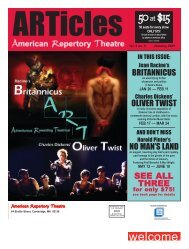
![Wild Swans Program [pdf] - American Repertory Theater](https://img.yumpu.com/49339866/1/167x260/wild-swans-program-pdf-american-repertory-theater.jpg?quality=85)
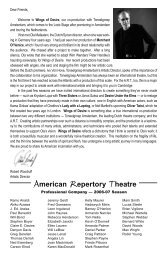
![Press Release: Trojan Barbie [pdf] - American Repertory Theater](https://img.yumpu.com/47571290/1/190x245/press-release-trojan-barbie-pdf-american-repertory-theater.jpg?quality=85)
![Articles issue as 4_2 [pdf] - American Repertory Theater](https://img.yumpu.com/45053160/1/190x249/articles-issue-as-4-2-pdf-american-repertory-theater.jpg?quality=85)
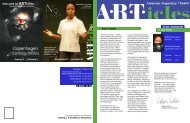
![Three Pianos Program [pdf] - American Repertory Theater](https://img.yumpu.com/41616353/1/167x260/three-pianos-program-pdf-american-repertory-theater.jpg?quality=85)
![Three Sisters [pdf] - American Repertory Theater](https://img.yumpu.com/40969361/1/190x245/three-sisters-pdf-american-repertory-theater.jpg?quality=85)

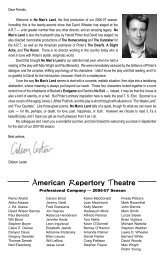
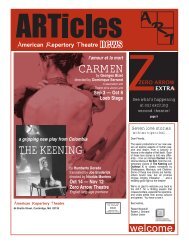
![Program: Sleep No More [pdf] - American Repertory Theater](https://img.yumpu.com/24629394/1/167x260/program-sleep-no-more-pdf-american-repertory-theater.jpg?quality=85)
![Program: Carmen [pdf] - American Repertory Theater](https://img.yumpu.com/24481072/1/190x245/program-carmen-pdf-american-repertory-theater.jpg?quality=85)
